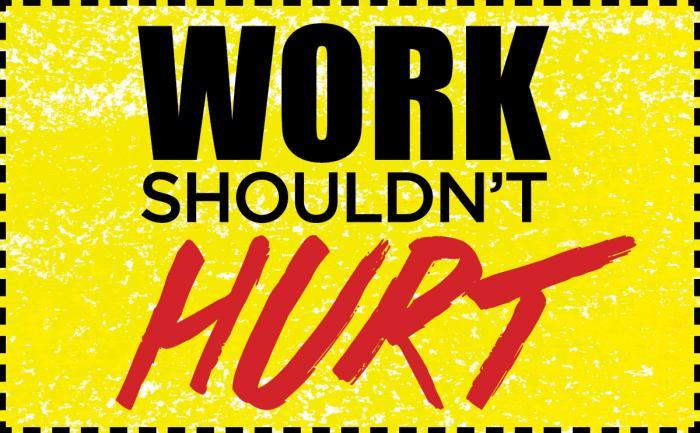
Every worker should be able to return home, at the end of the shift, healthy and safe.
But the most recent statistics from the Association of Workers’ Compensation Boards of Canada show that in 2017, there were 951 workplace fatalities in Canada, 46 more than the previous year.
And among these deaths, 23 were young workers aged 15-24.
In addition to the fatalities, there were 251,508 accepted claims for lost time due to a work-related injury or disease, including 31,441 claims from young workers. These statistics only include what’s reported and accepted by the compensation boards, and doesn’t reflect the total number of injuries that go unreported.
But statistics don’t tell the whole story. Loved ones, family members, friends and co-workers are also directly affected.
Health care workers now have the highest injury rate of any sector in the province. And in long-term care, the injury rate is four times higher than the provincial average.
Across the health system, workers are rushed off their feet – coping with extreme workloads, short-staffing and hospitals that are routinely admitting more patients than they are designed to accommodate.
All this puts health care workers at a heightened risk for injury and illness. That’s why safer, healthier workplaces are a top priority in all unionized work sectors.
But developing and enforcing health and safety programs in a health care system fragmented by privatization and reorganization is an ongoing challenge.
In the recent round of bargaining, the Facilities Bargaining Association, led by HEU, negotiated new language to tackle the unacceptable high injury rates that deal directly with workload, violence, and the ability of OH&S stewards to enforce members’ rights to safe workplaces.
The FBA secured $8.5 million to establish a new Provincial Occupational Health and Safety agency that will benefit all health care workers. And they bargained measures to address workload, establish regional workload committees, strengthen OH&S representation, fund OH&S stewards to work on pilot projects focused on injury prevention, create an MSI prevention project, and more.
As we mark this year’s National Day of Mourning, we renew our commitment to hold all employers accountable for ensuring safe and healthy workplaces, and strengthen our resolve to use every tool we have to make health care a safer, healthier work place for all our members.
To learn more about Day of Mourning events in your community, check with your local labour council or visit the Day of Mourning BC website.